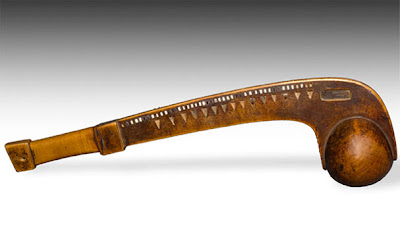The Bundu or Sande Society is a pan-African association of women found among several West African groups in Guinea, Liberia, and Sierra Leone. It educates and initiates young girls so as to enable them to assume their place in an adult society as wives and mothers and as social and political leaders. Entry into this society confers not only political power, but also introduces members to the association’s role in promoting wellness and treating disease. As a result, it is also a medicine society that employs both spiritual and physical therapies to help those in need, especially women and children.
Bundu masks, which are the focus of a current exhibition at the QCC Art Gallery in New York, are unique in sub-Sahara Africa in that they are the only ones worn by women in public masquerades. These
sowei helmet masks, which are diverse in form, are worn by female masqueraders draped in black raffia who embody the society’s spirit and serve as intermediaries with the ancestors.
This exhibition presents sixty sculptures that display the wonderful stylistic diversity of these masks among the Bassa, Gola, Mende, and Vai peoples of Africa.
Visit the exhibition's official website.
Information and images courtesy of the QCC Art Gallery
















































